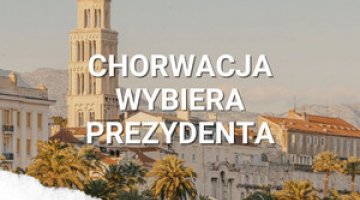Modi visits Zagreb: Croatia’s dreams of a Mediterranean hub
On 18 June, Indian Prime Minister Narendra Modi paid a visit to Croatia, where he signed bilateral cooperation agreements in the fields of agriculture, culture, science and technology, and education. Zagreb expressed its support for the conclusion of the free trade agreement negotiations between India and the EU, which resumed in 2022, and announced plans to develop cooperation in the sphere of defence. The talks also covered Croatia’s potential participation in the proposed India–Middle East–Europe Economic Corridor (IMEC), which New Delhi presents as an alternative to China’s Belt and Road Initiative. The sea-land route would run from India’s western coast to the Arabian Peninsula, and from there via the Israeli port of Haifa to Mediterranean European countries (in the project’s initial phase, only to the Greek port of Piraeus), and subsequently primarily to France, Germany, and Italy. Modi also discussed cooperation within IMEC two days earlier during his visit to Cyprus.
The Indian Prime Minister’s visit to Croatia reflects Zagreb’s aspirations to enhance its role as a ‘Mediterranean gateway’ to Central Europe. However, this will be a challenging undertaking given existing infrastructure limitations, regional competition, and political instability in the Middle East.
Commentary
- The visit by the leader of the world’s most populous country represents a public relations success for Zagreb. Modi rarely visits Europe, particularly Central Europe (with last year’s trips to Poland and Ukraine being exceptions). It is also the first time in over 30 years of diplomatic relations between the two countries that an Indian prime minister has visited Croatia. Although the bilateral agreements signed during the visit are general and only provide a framework for further cooperation, they place Zagreb at the forefront of the EU’s rapprochement with New Delhi. In recent months, cooperation between the EU and India has intensified, driven in part by tensions in the EU’s relations with China. Until recently, the Adriatic coast and the Western Balkans had largely fallen within the sphere of Beijing’s economic interests.
- The Croatian authorities aim to transform the port of Rijeka into a logistics hub. It competes in this domain with Slovenia’s Koper and Italy’s Trieste. For this reason, Croatia is eager to cooperate within the IMEC framework, while also seeking to rival other Mediterranean countries, such as Greece (Piraeus) and France (Marseille). This ambition is supported by the planned opening in September of the new Rijeka Gateway container terminal, which will be the most technologically advanced facility of its kind on the Adriatic. The project is being implemented by APM Terminals, a company owned by Danish shipping giant Maersk, together with the Croatian firm Enna Logic. Modi’s visit may be linked to Maersk’s recent major investments – estimated at $5 billion – in port and logistics infrastructure in India. Shipping companies are keen to use port terminals in which they hold shares, as this helps to optimise costs. New Delhi is exploring cooperation opportunities with other actors in the Mediterranean basin and is presenting IMEC as a chance to develop its hitherto limited economic ties with the countries of the Three Seas Initiative (3SI). Croatia, which is set to host the next 3SI summit in 2026, highlights its strategic position between Central Europe and the Adriatic, suggesting potential synergies between the 3SI and IMEC.
- Obstacles to the realisation of Zagreb’s ambitions may include infrastructure limitations and regional competition. The full utilisation of the Rijeka Gateway terminal’s planned handling capacity will be hampered by the current state of transport infrastructure, particularly the railway network. The main investment aimed at significantly improving freight transport and increasing the port’s throughput is the expansion and modernisation of the railway line running from Rijeka through Zagreb to the Hungarian border. However, the completion of this project is not expected before 2032. As previously mentioned, Italy and Slovenia remain strong competitors in the race to serve the markets of the Three Seas Initiative and to connect with the IMEC corridor. Both countries boast larger and better-connected ports in Trieste and Koper.
- The prospects for the establishment of the IMEC corridor appear vague. The concept was announced in September 2023 during the G20 summit in New Delhi. Its aim was to demonstrate to countries of the Global South that the West could offer an alternative to the Belt and Road Initiative. Despite pledges from the signatories – including the US, the EU, and India, along with Saudi Arabia, the United Arab Emirates, France, Germany, and Italy – no roadmap for the project has yet been developed, nor has funding been secured for its implementation. The current tense situation in the Middle East has brought IMEC to a standstill, although during a February meeting in New Delhi, European Commission President Ursula von der Leyen and Prime Minister Modi reaffirmed their commitment to advancing the initiative. However, the question of the route’s cost-effectiveness compared with traditional maritime shipping remains unresolved due to factors such as multiple cargo transshipment operations and the absence of a direct rail link between Middle Eastern countries.





